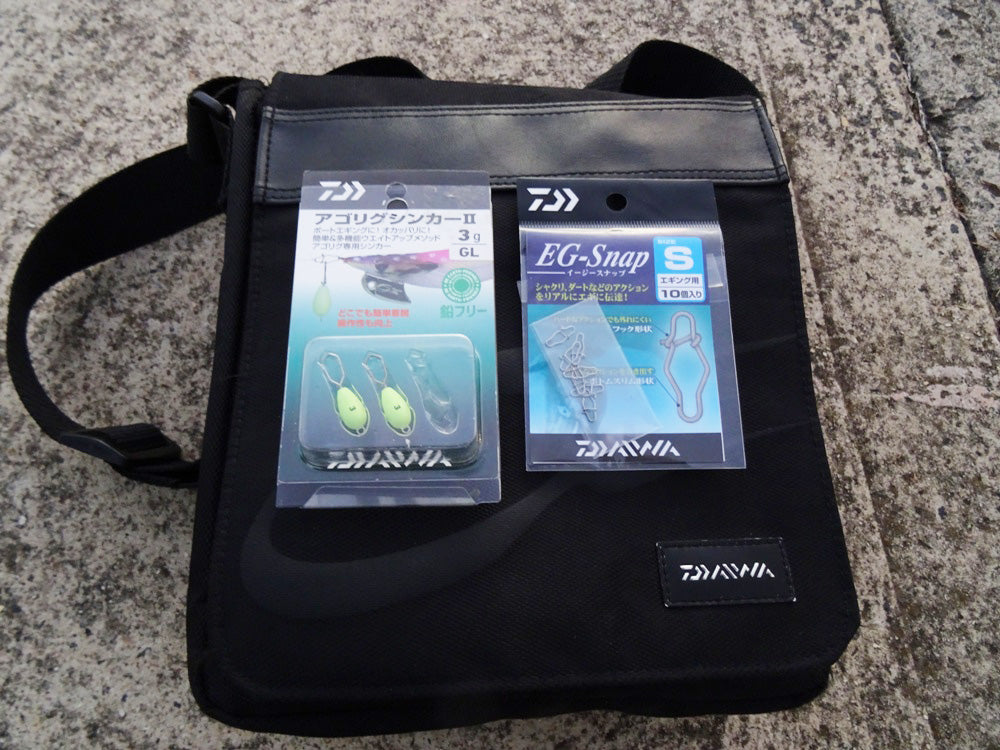Inky Business: The basics of Egi/Squid fishing
Posted on
By Jesse Rotin
Coming into autumn most people have been chasing species still abundant in the warmer conditions. But as the weeks get cooler resulting in still flat days, Egi or squid fishing becomes a top priority on a lot of anglers minds because of their irresistible taste and the way they attack a squid jig.
Land based or boat based?
It doesn’t matter whether you are fishing from the shore or a boat: the technique, jig sizes and retrieves are similar because most of the time you are targeting squid in similar areas.
I have fish both boat and land based since I was very young and I’ve had good success fishing both ways. But if I had to choose, I’d pick shore-based fishing as it can surprise you where you’ll find these critters. I’ve caught them in anything from 1ft of water chasing shrimp and mullet onto the shoreline to spotlighting them attacking a bait ball which all adds to the excitement when chasing them. I prefer night-time or sunrise and sunset for fishing from shore but you can catch them at most times of the day.
Fishing in the middle of the day can be a good time also as the sun is highest in the sky making it easier for the squid to see your jig.

Some key things to look for when Squiding:
Land based:
- Under jetty lights into the water
- Shallow reefs areas, rock walls, breakwaters, coastal shorelines
- Around bait schools
- Submerged pylons
- Ink patches marked and sprayed on the floor of a jetty from previous captures
Boat fishing:
- Shallow water reefs anything from 5ft deep and above
- Broken rubble beds, around channel drop offs and markers
- Submerged objects, older sunken jetty’s

Clear is the key
When chasing squid, calm days with a tiny bit of ripple on the water’s surface is desired but not always on the cards as the wind can be an issue some trips. One thing I have found and picked up on is fishing areas where the wind may be coming from the shore. When in a boat, this will generally slow down your drift, but the wind at your back also aids in casting and being in contact with your jig if you are land based.
I believe the most important thing when it comes to squid fishing is clear water, because squid mostly feed by eyesight. If you are fishing water that is discoloured, then fishing your jigs deeper, more towards the bottom can see you catch a few more. But clear water is the key.

There’s no right or wrong way!
Retrieve styles can vary from day to day. I find mixing your retrieves up is the best way to work out what the squid want on that particular session. Anything from one sharp lift to a burning, quick retrieve stopping your jig dead still and watching a squid race over for your jig.
Probably the most popular way to retrieve is to cast out let your jig free fall towards the bottom, slowly picking up any slack line and doing one gentle lift to check there’s isn’t a squid already on the jig. If there isn’t, then apply 2-3 sharp lifts of the rod then let the jig fall back down towards the sea floor.
Most times squid will eat your jig as it is free falling to the bottom so if you have one race over to your jig let the jig sink down slowly towards the sea floor and 9/10 times they will grab it. I find it’s best to fight the squid with a light drag so you don’t break the squid’s tentacles or arms off, losing the squid.
Keep it simple

When I go squid fishing I like to bring every jig in the pack I have, but if you want to be mobile especially when fishing from the shore, you should take a variety of jig size’s from 2.5-3.5 and in a range of different colours from naturals to stand out bright colours. Not unlike fishermen, a squid can change its mind on colours every hour.
Some of my favourites jigs are the Daiwa Emeraldas Nude 2.5. Other days I use the Daiwa Emeraldas Rattle series in 2.5 to get a little more attention and noise down below.
Other gear I like to take include lure clips to attach jigs on, leader material in a range of sizes from 6-12lb, and a good quality headlamp for visualising everything you’re doing at night. A pair of good quality line cutters are important also, and I use the Daiwa Petit Riggor as they are small and compact. A good camera is also important to photograph your catch.


 Wishlist
Wishlist

